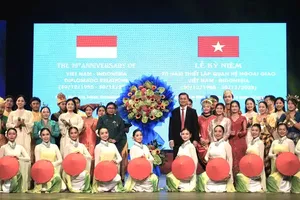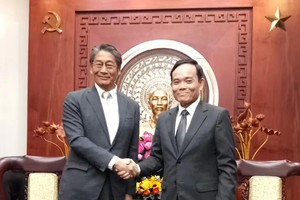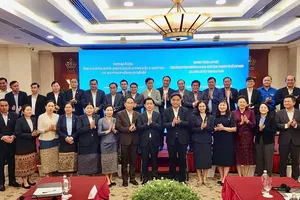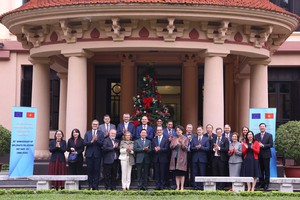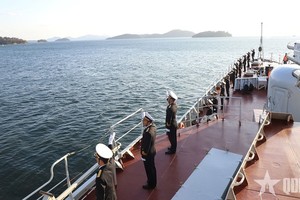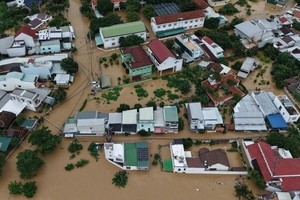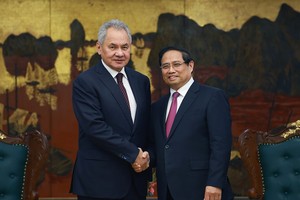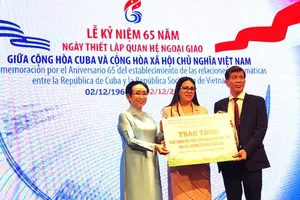TOKYO, Aug 17, 2011 (AFP) - Despite high landing fees and fuel taxes, Japan has seen a rush by domestic airlines and their overseas partners to set up low-cost carriers in anticipation of booming demand for air travel in Asia.
In less than a year, three new so-called LCCs have been unveiled as carriers aim to take demand away from Japan's bullet trains and buses, with an eye on airport capacity increases and rising demand as the economy recovers from the March 11 disasters.
All Nippon Airways has stakes in Peach and also in AirAsia Japan, a venture with Malaysia's AirAsia, while Japan Airlines and Australia's Qantas on Tuesday unveiled their Jetstar Japan venture.
But they are also positioning themselves against regional rivals to tap into Asia's huge growth potential amid rising affluence in places such as India and China, analysts say.
Aircraft manufacturer Boeing Co. expects that half of the world's new traffic added during the next 20 years will be to, from or within the Asian-Pacific region.
Japan has recently signed "open skies" agreements with the likes of the United States, Korea, Singapore, Malaysia, Hong Kong, Vietnam, Macau and Indonesia, opening the door to new entrants.
"Japan's civil air transport policy is undergoing big changes, with the proliferation of 'open skies' agreements with other countries and the future 'liberalisation' of many domestic airports," said Geoffrey Tudor, a Tokyo-based analyst at Japan Aviation Management Research.
"High infrastructure costs, a heavy fuel tax and sky-high landing fees have made it difficult to introduce LCC level fares but that is starting to change," he said.
With more landing slots being made available, Japanese airlines risk losing out on demand to low-cost foreign rivals that are being courted for business by under-utilised domestic airports, analysts say.
"Budget airlines are entering the market after Japan expanded the number of departure and arrival slots at the nation's key airports," said Makiko Nakagawa, aviation analyst at Fukoku Capital Management in Tokyo.
Larger airports such as Tokyo's Narita are also set to expand. Currently there are 220,000 slots annually at Narita, but this will grow to 300,000 slots by 2015 and the airport is planning its own LCC terminal.
Makiko warned that both ANA and JAL "will have to differentiate themselves from the expected influx of budget airlines into the Japanese market" and a competitive Asian space.
By teaming up with Qantas and AirAsia, JAL and ANA "have done the smart thing and teamed up with highly successful LCC partners", said Tudor.
Japanese budget carriers such as Skymark have been unable to offer the kind of heavily discounted fares associated with budget airlines in the United States and Europe due to high operating costs.
The extensive Shinkansen or "bullet-train" network also often provides a fast and cheaper alternative for domestic travel in Japan.
Larger carriers have also been forced to review their strategies.
Former flag carrier JAL has been forced to restructure amid bankruptcy proceedings that it completed in March after going under in January 2010 with debts of about 2.32 trillion yen ($28 billion).
ANA has also not escaped the need for restructuring and wage cuts.
All Nippon Airways holds a 67 percent stake in its AirAsia Japan venture with Southeast Asia's largest budget carrier AirAsia, and a 33.4 percent stake in budget carrier Peach. Both aim to be airborne by the middle of next year.
On Tuesday Qantas Airways, Japan Airlines and Mitsubishi Corp. said they will launch Jetstar Japan by the end of next year, aiming to offer fares that are 40 percent below existing domestic prices.
All three new airlines are eyeing short-haul Asia routes.
Qantas already operates its own low-cost Jetstar Airways unit, which it will use to set up the venture in Japan. Qantas also has used Jetstar Airways to form ventures in Singapore and Vietnam.
Its restructuring plans will see it create a premium airline as well as its Jetstar joint venture and slash 1,000 jobs. "Closer engagement with Asia is regarded as essential," said Qantas chief Alan Joyce.
"China may already have the world's fourth largest population of millionaires, and India the 12th. There are many, many millions of premium travellers in waiting."

